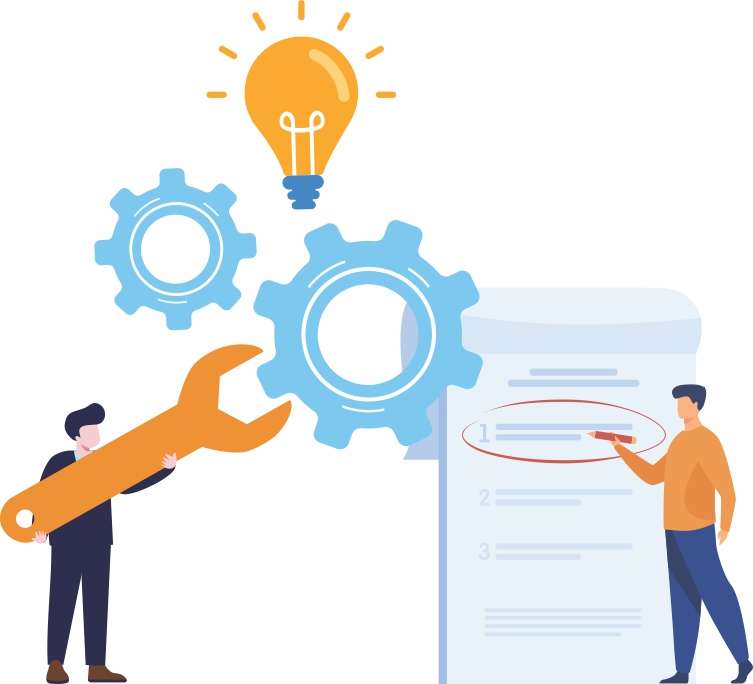The uncertainty and ambiguity across 2020 and 2021 have led to the rise of diverse thought processes and initiatives following the theme of being Atma-Nirbhar, or self-reliant across India Inc.
At DCB Bank we have aligned with the national objectives and priorities of India Inc, and started an Atma-Nirbhar campaign for startups to promote their sustainability and scalability with funding, investments, and mentoring.

Head Innovation & Architecture
DCB Bank
Decoding the importance of innovation index for being Atmanirbhar
 I believe that a key foundation for being Atma-Nirbhar stems from innovation. According to the Global Innovation Report, India’s innovation index stands at 45, as compared to 85, about five years ago. If you look closely, the innovation index is a reflection of a combination of multiple parameters, including education, infrastructure, healthcare, among others. It is also dependent on the efficacy of ICTs to empower corporate and Government organizations. Largely, a country’s innovation performance depends on its ability to adopt and leverage technologies like blockchain, AI or IoT or 5G to create an overall impact.
I believe that a key foundation for being Atma-Nirbhar stems from innovation. According to the Global Innovation Report, India’s innovation index stands at 45, as compared to 85, about five years ago. If you look closely, the innovation index is a reflection of a combination of multiple parameters, including education, infrastructure, healthcare, among others. It is also dependent on the efficacy of ICTs to empower corporate and Government organizations. Largely, a country’s innovation performance depends on its ability to adopt and leverage technologies like blockchain, AI or IoT or 5G to create an overall impact.
This hypothesis finds proof in the exemplary performance of countries like China, Israel or Singapore on the innovation index. While China bagged the 45th position a few years back, today it stands in the top 15. The major driving factor has been a clear focus on adoption and deployment of emerging technologies as well as Government action to promote automation at a national level.
Five pillars of self-reliance
I strongly believe that there are 5 major pillars that lay the foundation for the implementation Atma-Nirbhar at an industrial level. These pillars can serve as starting points for CXOs as well as Government leaders to facilitate their journey towards self-reliance and innovation.
Intent and Strategy
The first pillar revolves around those who will come together to create and govern the implementation of a plan or a blueprint to promote self-reliance and innovation at a national level. This will also involve a strategy for the percolation of this plan to specific sectors including financial services, healthcare, etc.
Mass Automation
The second pillar in the journey of self-reliance and innovation is the need for mass automation. Even today, there are several processes in private/ public organizations that are manual and can be automated. Therefore, each industry must look at areas for automation. For instance, in the financial sector, processes like cross border payments, trade finance, account opening or any of the Government services where paperwork is involved can be automated. In fact, according to the Global Automation Index, we have achieved only 20% of the automation potential and have a long way to go.
Technology Adoption
Third pillar for successful innovation which forms the backbone of every business model and facilitates operational excellence is technology. It is extremely important to decode which technologies have been adopted and implemented both at the national level and at the level of India Inc. Different enterprises have adopted technologies like cloud, but the adoption of emergent technologies is still in the nascent stages, but gaining gradual momentum. For instance, in the case of AI, we have in place a National Strategy for Artificial Intelligence along with several local and global programs being supported by organisations like Niti Aayog and NPCI.
In addition to AI, adoption of Blockchain or IoT is also accelerating. However, we do need to pay attention to the rate of adoption for technological drivers like 5g and mobility. Based on evidence from different countries, the rise of 5G and IoT with greater adoption of wearables, connected homes and experiences will consequently boost the need for Blockchain as a means of security. Therefore, it is very important to have a technology strategy at the national, sub-national and local level with key considerations for India Inc.
Strong Collaboration
The fourth pillar towards innovation and Atma-Nirbhar includes the approach to collaboration. Facilitating collaboration and breaking inter-departmental silos became one of the biggest facilitators for organizations to deal with the pandemic. Across all industries, business, technology, finance, etc. teams started collaborating robustly. At the same time, inter-enterprise collaboration, i.e. between banks, startups, etc. gained momentum. Collaboration is now seen as one of the top tools to facilitate innovation and self-reliance.
At DCB bank, we started the ‘DCB Bank Innovation Carnival’ that focuses on collaboration with the state Governments, startups, fintechs, and various mentors. With the power of collaboration, we now have 100+ mentors who come together and help our start-ups and fintech enterprises to take them to the next level.
Customer-centricity
The last and most important pillar to facilitate innovation, self-reliance is the customer. Here we shall take into account, the internal customers, which includes the senior leaders and other team members, and external end users/ customers. To promote customer centricity, it is important to take into account several parameters based on the following questions:
- How are they doing?
- What kind of automation would they benefit from based on your offerings?
- How has their experience been with mobile solutions, for instance, their experience with mobile banking?
The answers to these questions will generate a lot of customer insights, which will help enterprises acknowledge the potential areas of innovation that the end-user seeks. The idea is to understand the need and path to innovation for an existing system, existing business models as well as the existing processes to promote customer centricity and effectiveness.
Based on customer expectations, we need to strengthen our infrastructure and architectures within the organisation to provide a better experience.
To conclude it is important to note that each of the five pillars of self-reliance play a significant role in facilitating innovation.
Starting with a governance strategy and blueprint, enterprises need to identify gaps for mass automation, followed by a judicious and strategic adoption of technology. This needs to be followed by ecosystem-wide collaborations with participation from corporates or institutes, academia, start-ups, entrepreneurs and SMEs. Finally, a customer centric lens is important through the entire process to see India in the top 20 of the Global Innovation Index in the next five years.

About the author
Prasanna Lohar is currently the Innovation Head & Technical Architect at DCB Bank. He launched the Global Innovation program – “DCB Bank Innovation Carnival” to bring on Unique Experience of Innovation through Hackathons & Accelerator programs in India. Mr. Lohar has mentored more than 250 Startups during this program. He is also associated with Many Accelerators, Partners, Education institutes to practice Open innovation thru Hackathons & Innovation Programs. As part of DCB’s Digital & Architecture Transformation, he is closely associated with New & latest technology Assimilation, Experimentation, Innovative Customer Servicing & Engagement, etc.
He is the recipient of many Leadership awards, including Most Influential Payment Professionals, TOP 50 CIOs, Top 100 Innovative CIOs, Digital Leader of the Year, Top 20 BFSI Leaders.




